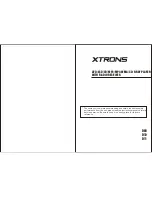
Call Transfer—Screened
Screened call transfer allows users to first announce and then transfer both line and intercom calls from
one station to another station or group in one of two ways. If both stations have access to the line or
intercom number, the user makes a common line pickup transfer. If the other station does not have access
to the incoming line, the user makes a transfer using the system transfer feature. The user uses the
TRANS/CONF button to effect the call transfer. Also refer to the discussion titled Call
Transfer—Unscreened with Automatic Camp-On, and Hot Transfer.
Call Transfer —Unscreened With Automatic Camp-On
Unscreened call transfer allows users to transfer both line and intercom calls from one station to another
station or group without first announcing them. The unscreened transferred call appears at the other
station where it will ring if that station is idle or automatically camp-on and await an answer if that station
is busy. The call automatically rings back to the transferring station after a programmed recall period.
There is no limit as to how many calls that can be camped onto another station. A transferred call will
ring if the called intercom number is idle. If the handset is off-hook, the ringing is subdued.
Call Waiting Tone
A user can send a call waiting tone to signal to a busy station that he or she wishes that station to contact
them. They do this by dialing a special code when they encounter a busy signal. The call waiting tone
sounds at the busy station and reoccurs until the calling party hangs up. The frequency of the call waiting
tone is preprogrammed by the programmer.
Camp-On With Automatic Call Back
After calling another station and encountering a busy signal or a ring with no answer, a user can camp on
to that station, hang up, and wait to be called back by the system when that station becomes idle or when
the user returns. Likewise, a user can camp-on to a busy line, hang up, and wait to be called back when it
becomes idle.
When the busy station becomes idle, the system rings the originating station and starts a timer. The user
of the originating station must take it off hook as soon as it rings and as soon as he or she does so, the
camped-on telephone rings.
When the user of the ring no-answer station uses it for any call activity, the system detects this activity as
a sign that the user has returned. As soon as that call activity is finished, the system rings the station that
originated the camp-on and starts a timer. The user of the originating station must take it off hook, and as
soon as he or she does so, the camped-on telephone rings.
When the busy line becomes idle, the system rings the originating station and starts a timer. The user of
the originating station must take it off hook before a preprogrammed time out occurs. As soon as he or
she does so, the camped-on line returns dial tone to the originating station. If the originating user does
not take his or her station off– hook before the time-out period elapses, the system cancels the camp-on.
If, for some reason, the system cannot ring the camped-on facility after the user takes the originating
station off hook, he or she hears busy tone and may camp-on again.
Camp–On—Call Waiting
If a user makes a call to a busy telephone, he or she can send a call waiting tone to the busy telephone and
wait on line for an answer. As soon as the called telephone returns to idle, it will ring with the camped on
call.
Also refer to the discussion titled Call Waiting Tone.
GCA40–130
DXP Plus General Description
60 – Understanding The Features
















































